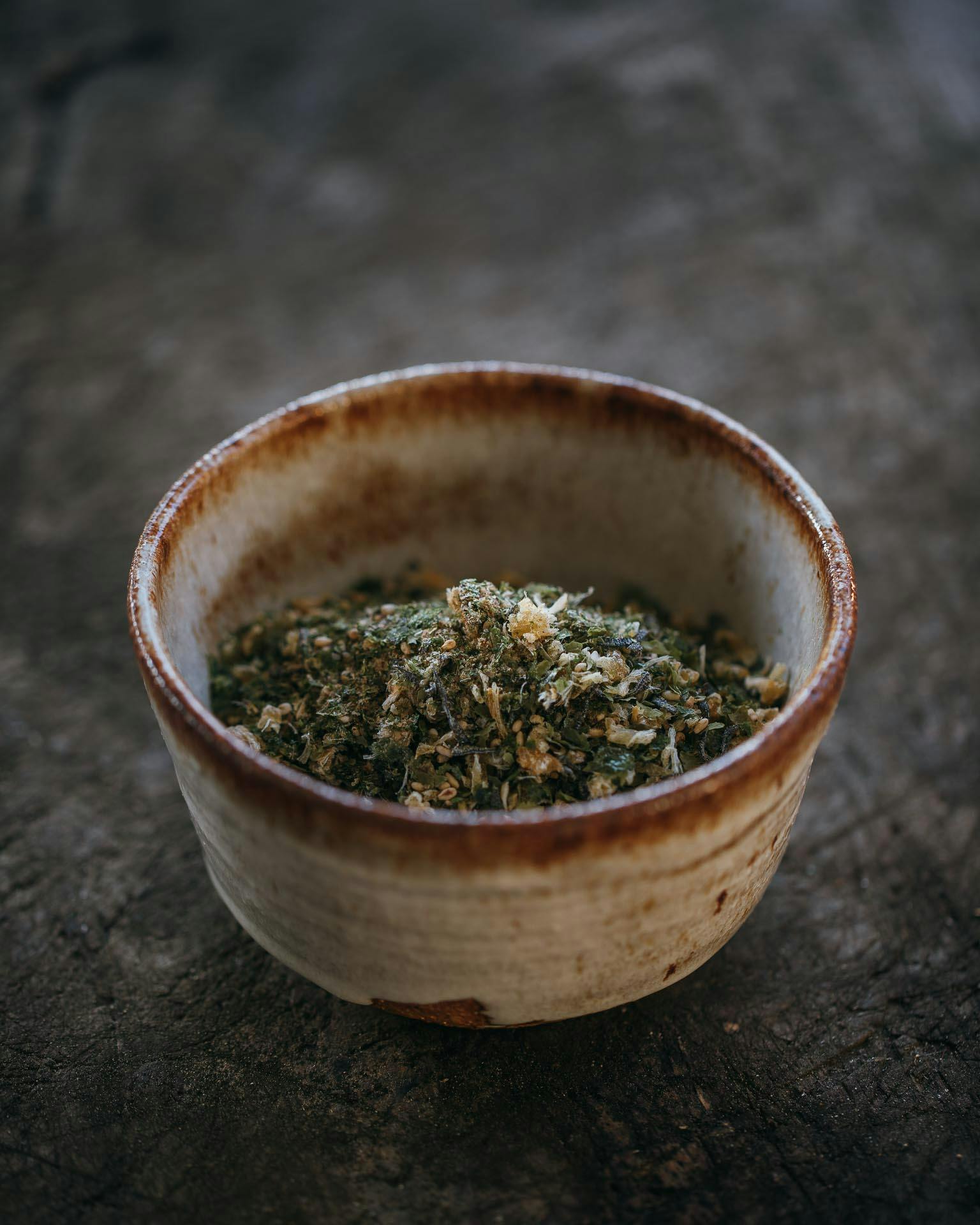Dried shrimp and seaweed furikake

Furikake is one of the most underrated Japanese foods. This is mainly because it’s not often served in restaurants, but you’d be unlikely to find a Japanese family who didn’t have furikake in their cupboard at home. It’s the ultimate convenience food, turning plain rice into a quick meal in seconds. It’s a rice seasoning and we use it every single day, either just scattered over steamed rice or moulded into onigiri – rice balls. Just scatter a bit of furikake over some rice, mould it into a ball and wrap with a little nori.
Ingredients
½ cup large dried shrimp
2 sheets nori
½ cup katsuobushi (bonito flakes)
1 tsp salt
½ tsp sugar
2 tbsp shiokombu
2 tbsp aonori (dried sea lettuce flakes)
2 tbsp toasted sesame seeds
All these ingredients are available from Asian grocery stores.
Method
Place the shrimp in the small blending bowl of the Vitamix Ascent high-performance blender and blend to a coarse but fluffy texture. Transfer to a bowl. Toast the nori by waving it over an open flame until it becomes brittle. Crumble it into the blending bowl and add the bonito flakes and salt. Blend to a coarse powder and remove to the same bowl as the shrimp. Add the shiokombu to the blending bowl and pulse until roughly chopped. Combine together with the remaining ingredients and mix well. Transfer to a press-seal bag. The furikake will keep at room temperature for about 6 months.
Top Tips for Furikake
- Keep your furikake dry for storage. You can save a little pouch of silica gel from your nori and store it together with the furikake if you like.
- Taste your furikake. It should be salty and umami with a touch of sweetness.
- Try other dried seafood for your furikake too. I like to use dried scallops, sardines and other dried seaweeds.
Ingredients
Method
Furikake is one of the most underrated Japanese foods. This is mainly because it’s not often served in restaurants, but you’d be unlikely to find a Japanese family who didn’t have furikake in their cupboard at home. It’s the ultimate convenience food, turning plain rice into a quick meal in seconds. It’s a rice seasoning and we use it every single day, either just scattered over steamed rice or moulded into onigiri – rice balls. Just scatter a bit of furikake over some rice, mould it into a ball and wrap with a little nori.
Ingredients
½ cup large dried shrimp
2 sheets nori
½ cup katsuobushi (bonito flakes)
1 tsp salt
½ tsp sugar
2 tbsp shiokombu
2 tbsp aonori (dried sea lettuce flakes)
2 tbsp toasted sesame seeds
All these ingredients are available from Asian grocery stores.
Method
Place the shrimp in the small blending bowl of the Vitamix Ascent high-performance blender and blend to a coarse but fluffy texture. Transfer to a bowl. Toast the nori by waving it over an open flame until it becomes brittle. Crumble it into the blending bowl and add the bonito flakes and salt. Blend to a coarse powder and remove to the same bowl as the shrimp. Add the shiokombu to the blending bowl and pulse until roughly chopped. Combine together with the remaining ingredients and mix well. Transfer to a press-seal bag. The furikake will keep at room temperature for about 6 months.
Top Tips for Furikake
- Keep your furikake dry for storage. You can save a little pouch of silica gel from your nori and store it together with the furikake if you like.
- Taste your furikake. It should be salty and umami with a touch of sweetness.
- Try other dried seafood for your furikake too. I like to use dried scallops, sardines and other dried seaweeds.

